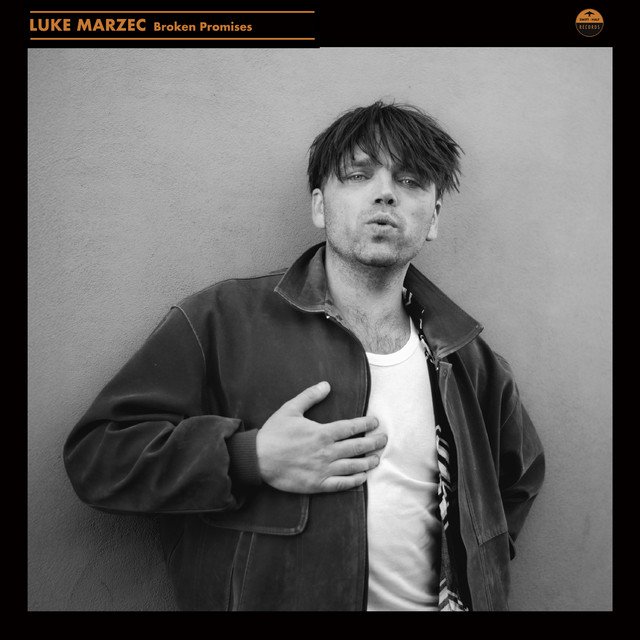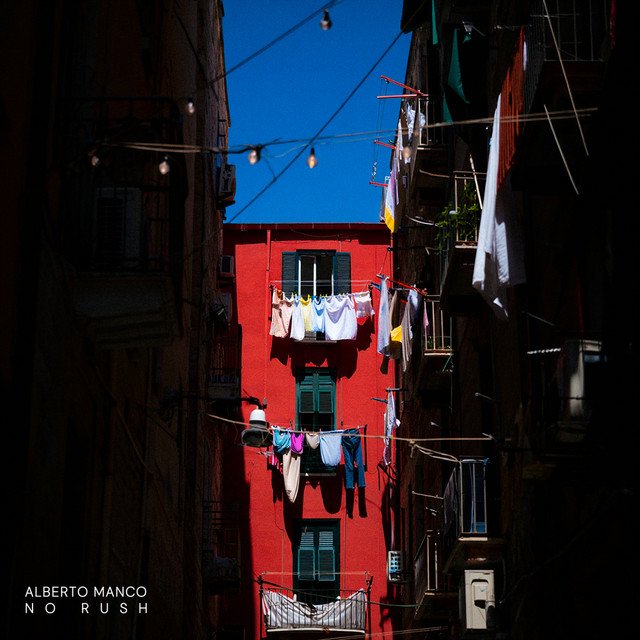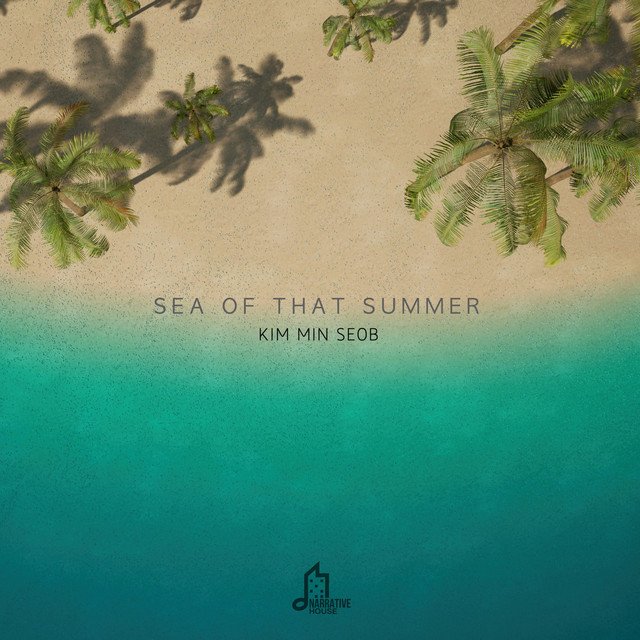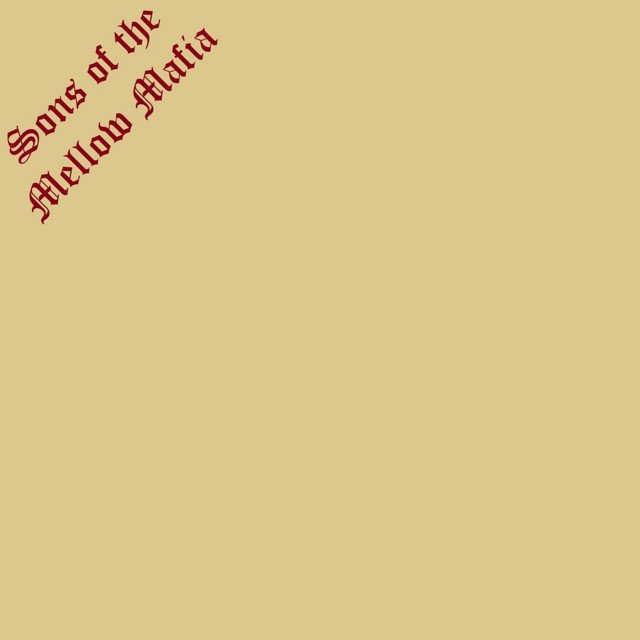Jazz Music ⁞ New Releases⁞ Artist Interviews⁞ Music News
Introduction of Jazz Music
Jazz is a genre of music that originated in the African-American communities of New Orleans, United States, in the late 19th and early 20th centuries. It is characterized by its use of improvisation, complex harmonic structures, and a wide range of musical influences, including blues, gospel, and European classical music. Jazz is known for its swing rhythm, which is created by the use of syncopated rhythms and a strong pulse. It is often played by small ensembles, such as a quintet or sextet, and is known for its ability to adapt to a wide range of musical contexts and styles. Jazz has had a significant influence on many other genres of music, and has been an important part of the cultural fabric of the United States and the rest of the world for more than a century.
Jazz by Nagamag Playlist on Spotify
Jazz Featured Releases
John Ryerson – You Don’t Know What Love Is | Jazz music review
“Lead vocal creates wonderful and catchy atmosphere and cello in the background layers that feeling so well. Very addictive harmonic structure, especially with smooth guitar themes and trumpet moment that makes wonderful transition in the middle of the song. ”
-Nagamag.com
Expand to read review translations *
“Το Lead Vocal δημιουργεί υπέροχη και πιασάρικη ατμόσφαιρα και τσέλο στα στρώματα υποβάθρου που αισθάνονται τόσο καλά. Πολύ εθιστική αρμονική δομή, ειδικά με ομαλά θέματα κιθάρας και τη στιγμή της τρομπέτας που κάνει υπέροχη μετάβαση στη μέση του τραγουδιού.”
-Nagamag.com
“La voz principal crea una atmósfera y un violonchelo maravilloso en las capas de fondo que se sienten tan bien. Estructura armónica muy adictiva, especialmente con temas de guitarra suaves y momento de trompeta que hace una transición maravillosa en el medio de la canción.”
-Nagamag.com
The original review of “John Ryerson – You Don’t Know What Love Is” is written in the native language that is spoken by the dedicated, for this song, Nagamag’s Jazz reviewer and followed by two translations*, of which the one depends from the country of origin of the artist “John Ryerson” (United States) and the other one is translated to a different language than original review and the country of origin of the artist.
* Automatically Translated
Nagamag unveils the mesmerizing composition “You Don’t Know What Love Is”, an extraordinary creation of harmony and creativity that “John Ryerson” offered to all of us. A Jazz song, which evoked an emotional voyage to our curator that desired to write down a unique review for “John Ryerson – You Don’t Know What Love Is”. What also sets this song among the featured choices of Nagamag is the way that “You Don’t Know What Love Is” is enriched with Soul characteristics. “John Ryerson – You Don’t Know What Love Is” is a rich music creation that deserves to be listened to again and again. Nagamag is honored to share this detailed music review by one of our experienced reviewers for Jazz music compositions. As always, Nagamag keeps up evaluating Jazz songs from across the globe, ensuring that all Jazz enthusiasts around the world have access to these auditory treasures .
Additional information/sources for John Ryerson – You Don’t Know What Love Is
The performance of this song is permeated with the experience of love found and love lost, and polished through years of gigging in the New York scene.
Jazz home page where “John Ryerson – You Don’t Know What Love Is” is hosted on Nagamag Music Magazine
Nagamag takes pride in supporting Jazz artists like “John Ryerson”, providing music reviews and music discoveries like “You Don’t Know What Love Is”.
This music post about song “You Don’t Know What Love Is” by “John Ryerson” is hosted in Jazz page on Nagamag.
There you can find similar Jazz artists to “John Ryerson” and more Jazz, Soul songs like “You Don’t Know What Love Is” that have been carefully selected by Nagamag’s Jazz experienced curators and reviewed by Nagamag’s Jazz dedicated reviewers.
Learn everything about Jazz on Wikipedia
If you enjoyed “John Ryerson – You Don’t Know What Love Is” but you have never listened before to any other Jazz song or you are interested in learning more about Jazz music gerne then click here to visit Jazz music page on Wikipedia.
Jazz music refers to a distinct style with common characteristics. Each genre carries its unique sound, instruments, and cultural influences. For a deeper understanding of Jazz music, Wikipedia provides comprehensive insights into its history, notable artists, and iconic works. Delve into the diverse and dynamic world of Jazz music through this valuable resource, broadening your knowledge around Jazz genre.
joey calveiro – despertar | Jazz music review
“Guitars themes perfectly aligned together and produced so well. Song really have that hook, catchy moment that you want to come back again and again. Lead saxophone theme is just mesmerizing, layered with cinematic atmosphere followed with dreamy piano theme and strings in the background. ”
-Nagamag.com
Expand to read review translations *
“Τα κιθάρες θέματα είναι τέλεια ευθυγραμμισμένα και παρήγαγαν τόσο καλά. Το τραγούδι έχει πραγματικά αυτό το γάντζο, πιασάρικη στιγμή που θέλετε να επιστρέψετε ξανά και ξανά. Το θέμα του σαξόφωνο μολύβδου είναι απλά μαγευτικό, στρωματοποιημένο με κινηματογραφική ατμόσφαιρα που ακολουθείται με ονειρικό θέμα πιάνου και χορδές στο παρασκήνιο.”
-Nagamag.com
“Temas de guitarras perfectamente alineados y producidos muy bien. La canción realmente tiene ese gancho, pegadizo, que quieres volver una y otra vez. El tema del saxofón principal es simplemente fascinante, en capas de atmósfera cinematográfica seguida de tema de piano de ensueño y cuerdas en el fondo.”
-Nagamag.com
The original review of “joey calveiro – despertar” is written in the native language that is spoken by the dedicated, for this song, Nagamag’s Jazz reviewer and followed by two translations*, of which the one depends from the country of origin of the artist “joey calveiro” (United States) and the other one is translated to a different language than original review and the country of origin of the artist.
* Automatically Translated
Nagamag unveils the mesmerizing composition “despertar”, an extraordinary creation of harmony and creativity that “joey calveiro” offered to all of us. A Jazz song, which evoked an emotional voyage to our curator that desired to write down a unique review for “joey calveiro – despertar”. What also sets this song among the featured choices of Nagamag is the way that “despertar” is enriched with Classical characteristics. “joey calveiro – despertar” is a rich music creation that deserves to be listened to again and again. Nagamag is honored to share this detailed music review by one of our experienced reviewers for Jazz music compositions. As always, Nagamag keeps up evaluating Jazz songs from across the globe, ensuring that all Jazz enthusiasts around the world have access to these auditory treasures .
Additional information/sources for joey calveiro – despertar
“Despertar” is an original composition featuring piano, saxophone, acoustic guitar, and strings. It’s a very calming, softly mixed and mastered, melodic song with a peaceful range
Jazz home page where “joey calveiro – despertar” is hosted on Nagamag Music Magazine
Nagamag takes pride in supporting Jazz artists like “joey calveiro”, providing music reviews and music discoveries like “despertar”.
This music post about song “despertar” by “joey calveiro” is hosted in Jazz page on Nagamag.
There you can find similar Jazz artists to “joey calveiro” and more Jazz, Classical songs like “despertar” that have been carefully selected by Nagamag’s Jazz experienced curators and reviewed by Nagamag’s Jazz dedicated reviewers.
Learn everything about Jazz on Wikipedia
If you enjoyed “joey calveiro – despertar” but you have never listened before to any other Jazz song or you are interested in learning more about Jazz music gerne then click here to visit Jazz music page on Wikipedia.
Jazz music refers to a distinct style with common characteristics. Each genre carries its unique sound, instruments, and cultural influences. For a deeper understanding of Jazz music, Wikipedia provides comprehensive insights into its history, notable artists, and iconic works. Delve into the diverse and dynamic world of Jazz music through this valuable resource, broadening your knowledge around Jazz genre.
Extra Time – Where Is The Light | Jazz music review
“Soothing and easy listening sounds make this jazz song very enjoyable. Catchy violins theme fit so well, creating wonderful atmosphere within the song and adding dreamy cinematic momentum. Her voice is just amazing, feels like a blissful layer within this amazing jazz orchestration of very talented musicians. ”
-Nagamag.com
Expand to read review translations *
“Οι καταπραϋντικοί και εύκολοι ήχοι ακρόασης κάνουν αυτό το τραγούδι τζαζ πολύ ευχάριστο. Το Catchy Violins ταιριάζει τόσο καλά, δημιουργώντας υπέροχη ατμόσφαιρα μέσα στο τραγούδι και προσθέτοντας ονειρική κινηματογραφική ορμή. Η φωνή της είναι απλά εκπληκτική, αισθάνεται σαν ένα ευτυχισμένο στρώμα μέσα σε αυτή την εκπληκτική τζαζ ενορχηστρώση πολύ ταλαντούχων μουσικών.”
-Nagamag.com
“Los sonidos de escucha relajantes y fáciles hacen que esta canción de jazz sea muy agradable. El tema de los violines pegadizos se ajusta tan bien, creando un ambiente maravilloso dentro de la canción y agregando impulso cinematográfico soñador. Su voz es simplemente increíble, se siente como una capa maravillosa dentro de esta increíble orquestación de jazz de músicos muy talentosos.”
-Nagamag.com
The original review of “Extra Time – Where Is The Light” is written in the native language that is spoken by the dedicated, for this song, Nagamag’s Jazz reviewer and followed by two translations*, of which the one depends from the country of origin of the artist “Extra Time” (Australia) and the other one is translated to a different language than original review and the country of origin of the artist.
* Automatically Translated
Nagamag unveils the mesmerizing composition “Where Is The Light”, an extraordinary creation of harmony and creativity that “Extra Time” offered to all of us. A Jazz song, which evoked an emotional voyage to our curator that desired to write down a unique review for “Extra Time – Where Is The Light”. What also sets this song among the featured choices of Nagamag is the way that “Where Is The Light” is enriched with Funk characteristics. “Extra Time – Where Is The Light” is a rich music creation that deserves to be listened to again and again. Nagamag is honored to share this detailed music review by one of our experienced reviewers for Jazz music compositions. As always, Nagamag keeps up evaluating Jazz songs from across the globe, ensuring that all Jazz enthusiasts around the world have access to these auditory treasures .
Additional information/sources for Extra Time – Where Is The Light
Extra Time is music about stories. Cinematic stories that can be told in the format of a 3 minute song. Its lush, it’s melodic, its harmonic and intelligent.
Jazz home page where “Extra Time – Where Is The Light” is hosted on Nagamag Music Magazine
Nagamag takes pride in supporting Jazz artists like “Extra Time”, providing music reviews and music discoveries like “Where Is The Light”.
This music post about song “Where Is The Light” by “Extra Time” is hosted in Jazz page on Nagamag.
There you can find similar Jazz artists to “Extra Time” and more Jazz, Funk songs like “Where Is The Light” that have been carefully selected by Nagamag’s Jazz experienced curators and reviewed by Nagamag’s Jazz dedicated reviewers.
Learn everything about Jazz on Wikipedia
If you enjoyed “Extra Time – Where Is The Light” but you have never listened before to any other Jazz song or you are interested in learning more about Jazz music gerne then click here to visit Jazz music page on Wikipedia.
Jazz music refers to a distinct style with common characteristics. Each genre carries its unique sound, instruments, and cultural influences. For a deeper understanding of Jazz music, Wikipedia provides comprehensive insights into its history, notable artists, and iconic works. Delve into the diverse and dynamic world of Jazz music through this valuable resource, broadening your knowledge around Jazz genre.
Latest Jazz discoveries
Project Review: Jason LaPierre x eda – There Are Things I’d Like to Say | Jazz Release
Τι πιο απολαυστικό απο το να ακούς αυτό το ρομαντικό κομμάτι κάτω απο τον έναστρο ουρανό.Τα φωνητικά σε μια πλήρη συμφωνία με... >>> Read full review & listen to the song on Nagamag #nujazz #jazztronica #indiepop #jasonlapierrexeda #jasonlapierrexeda #unitedstates #philippines #nagamag #musicmagazine #musicreview #review
“Stuck Here” by Talkline | Jazz Song Review
Η ευχάριστη μελωδία μας μεταφέρει το κέφι της και τη δροσιά της μια ανέμελη,ζεστή μέρα του καλοκαιριού.Τα φωνητικά με την ζων... >>> Read full review & listen to the song on Nagamag #nujazz #jazztronica #altpop #talkline #unitedkingdom #nagamag #musicmagazine #musicreview #review
Fresh Find Review: Luke Marzec – Broken Promises | Jazz Discovery
Ο κεφάτος ρυθμός μας σηκώνει από τον καναπέ μας και λικνιζόμαστε μαζί του τόσο ανέμελα και χαλαρά καθώς η μέρα φεύγει σιγά σι... >>> Read full review & listen to the song on Nagamag #neosoul #nujazz #jazztronica #retrosoul #lukemarzec #unitedkingdom #nagamag #musicmagazine #musicreview #review
Song Critique Alberto Manco – No Rush | Review
Η ωραία ταξιδιάρικη μελωδία μας συνοδεύει μέσα στα στενά της πόλης και με τη γοητευτική θλίψη της δείχνει να καταλαβαίνει τα ... >>> Read full review & listen to the song on Nagamag #nujazz #jazztronica #jazzfusion #jazz #albertomanco #italy #nagamag #musicmagazine #musicreview #review
Song Review: “Errors in Disguise” by 8 octopi | A Jazz Discovery
Ο αισθησιασμός της μελωδίας αφήνει την φαντασία μας ελεύθερη και το ήρεμο άγγιγμα της είναι τόσο ευεργετικό. Τα γλυκά φωνητικ... >>> Read full review & listen to the song on Nagamag #jazz #8octopi #switzerland #nagamag #musicmagazine #musicreview #review
Release Critique: Johanna Linnea Jakobsson – Too Slow | Jazz Review
Με γλυκές και διακριτικές πινελιές η μελωδία ζωγραφίζει το τοπίο της φαντασίας μας και όλα μοιάζουν τόσο γαλήνια. Τα εκπληκτι... >>> Read full review & listen to the song on Nagamag #jazz #singersongwriter #johannalinneajakobsson #denmark #nagamag #musicmagazine #musicreview #review
Song Review: “FwL” by ZENON | A Jazz Discovery
Τα αισθησιακά και γοητευτικά φωνητικά μας εντυπωσιάζουν από την πρώτη στιγμή. Οι εξαιρετικές ικανότητες τους δημιουργούν ένα ... >>> Read full review & listen to the song on Nagamag #neosoul #contemporaryrnb #zenon #canada #nagamag #musicmagazine #musicreview #review
Critique: “Sea of that summer” by KIM MIN SEOB | Jazz Review
Το καλοκαίρι είναι επιτέλους εδώ και αυτή η μοναδική μελωδία έρχεται για να απογειώσει την διάθεσή μας. Όλα γύρω μοιάζουν τόσ... >>> Read full review & listen to the song on Nagamag #jazzfusion #kimminseob #southkorea #nagamag #musicmagazine #musicreview #review
Review: Sons of the Mellow Mafia – Breonna | A Jazz Discovery
Η ωραία ατμοσφαιρική μελωδία δημιουργεί όμορφες εικόνες στο μυαλό και μια νοσταλγική διάθεση μας περιβάλλει. Οι αισθήσεις μας... >>> Read full review & listen to the song on Nagamag #americana #acousticfolk #jazz #sonsofthemellowmafia #unitedstates #nagamag #musicmagazine #musicreview #review
Some Jazz subgenres
There are many subgenres of jazz, and the boundaries between them can be somewhat fluid. Here are a few of the most common subgenres of jazz:
Dixieland jazz: Also known as “traditional” or “New Orleans” jazz, this style is characterized by its use of collective improvisation and a strong rhythm section, featuring instruments such as the trumpet, trombone, and clarinet.
Swing: This style emerged in the 1930s and 1940s and is characterized by its use of a swinging rhythm and big band instrumentation. It was popularized by bands led by musicians such as Duke Ellington and Benny Goodman.
Bebop: This style emerged in the 1940s and is characterized by its fast tempo, complex chord progressions, and extensive use of improvisation. It was popularized by musicians such as Charlie Parker and Dizzy Gillespie.
Cool jazz: This style emerged in the 1950s and is characterized by its use of complex harmonies and a laid-back, relaxed approach to rhythm. It was popularized by musicians such as Miles Davis and Dave Brubeck.
Fusion: This style emerged in the 1970s and is characterized by its incorporation of elements from other genres of music, such as rock, funk, and world music. It was popularized by musicians such as John McLaughlin and Chick Corea.
Smooth jazz: This style emerged in the 1980s and is characterized by its use of electronic instrumentation and a focus on melody and groove. It was popularized by musicians such as George Benson and Grover Washington Jr.
Hard bop: This style emerged in the 1950s and is characterized by its use of blues and gospel influences and its incorporation of elements from bebop and swing. It was popularized by musicians such as Horace Silver and Art Blakey.
Free jazz: This style emerged in the 1960s and is characterized by its use of extended improvisation and a lack of strict chord progressions or other formal structures. It was popularized by musicians such as Ornette Coleman and John Coltrane.
Latin jazz: This style is characterized by its incorporation of Latin American rhythms and melodies, as well as its use of percussion instruments such as congas, timbales, and bongos. It was popularized by musicians such as Tito Puente and Cal Tjader.
Acid jazz: This style emerged in the 1980s and is characterized by its incorporation of elements from funk, soul, and hip hop, as well as its use of electronic instrumentation. It was popularized by musicians such as Brand New Heavies and Jamiroquai.
Jazz-rock: This style emerged in the 1970s and is characterized by its incorporation of elements from rock music and its use of electric instruments. It was popularized by musicians such as Mahavishnu Orchestra and Weather Report.
Jazz-funk: This style is characterized by its incorporation of elements from funk music and its use of electric instruments and groove-based rhythms. It was popularized by musicians such as James Brown and George Clinton.
As with any genre of music, these subgenres are just a few of the many that exist within the broader category of jazz. There are many other styles and variations within jazz.
The most used instruments in Jazz Music
There are many different instruments that are commonly used in jazz music, and the specific instruments used can vary depending on the style and context of the music. Here are a few of the most common instruments used in jazz:
Piano: The piano is a common instrument in jazz music and is often used to provide the harmonic foundation for the music. Jazz pianists may use a range of techniques, including comping (providing chordal accompaniment), soloing (performing a melodic solo), and improvising (creating music spontaneously).
Drums: The drums are an important part of the rhythm section in jazz music and are often used to create a swinging or groove-based feel. Jazz drummers may use a range of techniques, including various stick and cymbal patterns, to create complex rhythms and interactive interactions with other musicians.
Bass: The bass is another important part of the rhythm section in jazz music and is often used to provide the foundation for the music. Jazz bassists may use a range of techniques, including walking bass lines (a repeating pattern of notes played over the chord progression of a song) and soloing, to create a strong rhythmic and melodic foundation for the music.
Guitar: The guitar is often used in jazz music and can play a variety of roles, from providing chordal accompaniment to soloing. Jazz guitarists may use a range of techniques, including chord voicings (arrangements of notes in a chord), arpeggios (broken chords played one note at a time), and improvisation, to create complex and interesting musical textures.
Saxophone: The saxophone is a common instrument in jazz music and is often used to play melodies and improvise solos. Jazz saxophonists may use a range of techniques, including alternate fingerings, multiphonics (playing more than one pitch at a time), and circular breathing (a technique for continuous blowing), to create a wide range of sounds and textures.
Vocals: Vocals are often used in jazz music, and many jazz singers have made significant contributions to the genre. Jazz vocals can take many forms, ranging from scat singing (improvised vocalizations using nonsense syllables) to more traditional vocal styles such as singing with lyrics. Some famous jazz singers include Billie Holiday, Ella Fitzgerald, and Louis Armstrong, all of whom are known for their unique vocal styles and ability to improvise.
In addition to traditional vocals, many jazz musicians also use electronic effects and processing to manipulate their voices, creating a wide range of sounds and textures. Some jazz musicians, such as Bobby McFerrin and Gregory Porter, have made significant contributions to the genre using only their voices, without any accompanying instruments.
In jazz music, lyrics are often used in the same way as in other genres of music, to express emotions, tell a story, or convey a message. However, jazz lyrics may also be used to create a structure for improvisation or to provide a basis for scat singing, which is a form of vocal improvisation in which the singer uses nonsense syllables instead of actual words.
Jazz lyrics may also be more abstract and poetic than lyrics in other genres of music, and may use figurative language or symbolism to convey meaning. Jazz lyrics often reflect the social and cultural contexts in which the music was created, and may address themes such as love, loss, hope, and social or political issues.
Overall, vocals and the meaning of lyrics in jazz music depends on the context in which they are used and the intentions of the songwriter. They can be used to express emotions, tell a story, convey a message, or provide a structure for the music to follow.












